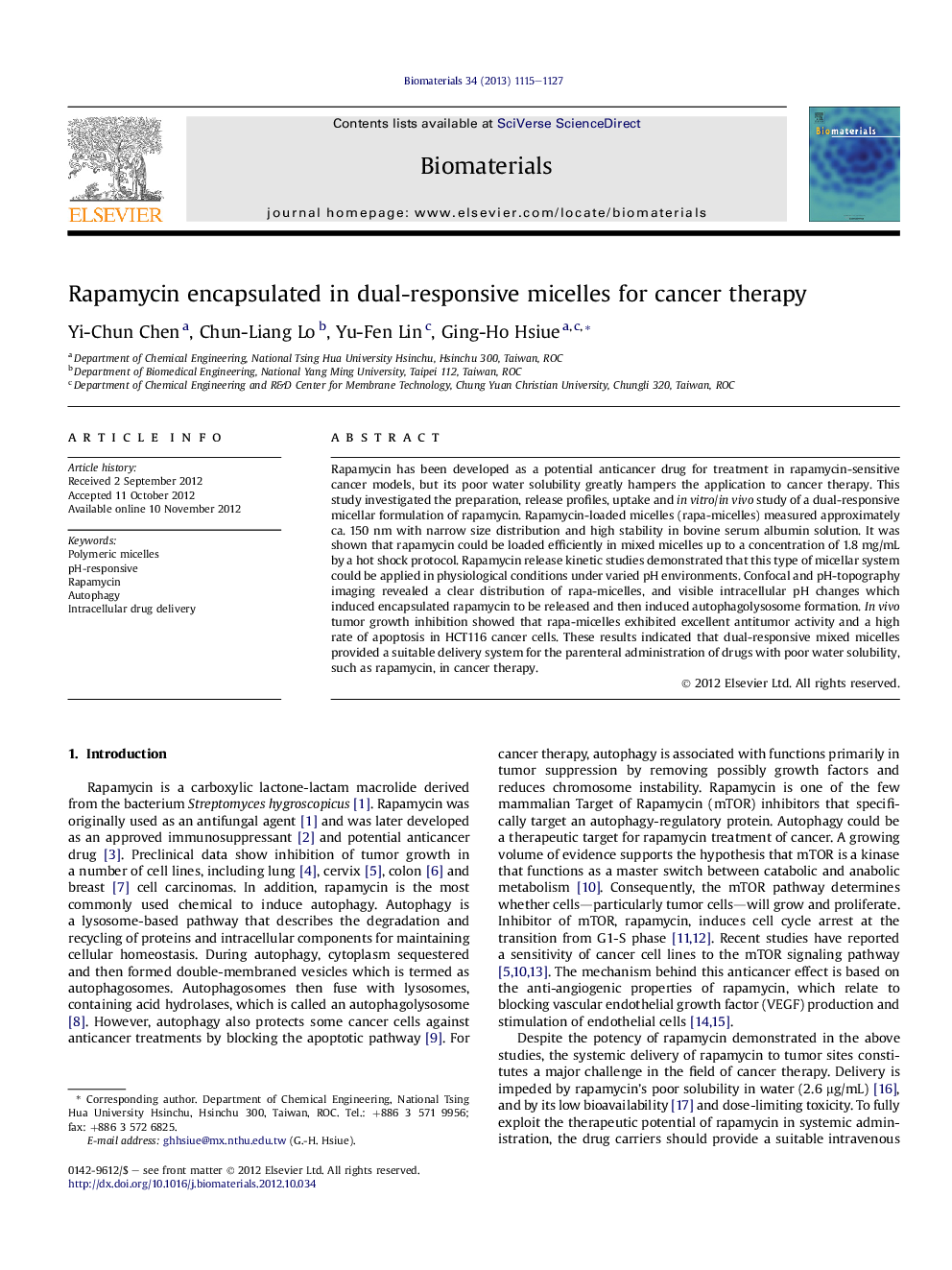| Article ID | Journal | Published Year | Pages | File Type |
|---|---|---|---|---|
| 10229301 | Biomaterials | 2013 | 13 Pages |
Abstract
Rapamycin has been developed as a potential anticancer drug for treatment in rapamycin-sensitive cancer models, but its poor water solubility greatly hampers the application to cancer therapy. This study investigated the preparation, release profiles, uptake and in vitro/in vivo study of a dual-responsive micellar formulation of rapamycin. Rapamycin-loaded micelles (rapa-micelles) measured approximately ca. 150 nm with narrow size distribution and high stability in bovine serum albumin solution. It was shown that rapamycin could be loaded efficiently in mixed micelles up to a concentration of 1.8 mg/mL by a hot shock protocol. Rapamycin release kinetic studies demonstrated that this type of micellar system could be applied in physiological conditions under varied pH environments. Confocal and pH-topography imaging revealed a clear distribution of rapa-micelles, and visible intracellular pH changes which induced encapsulated rapamycin to be released and then induced autophagolysosome formation. In vivo tumor growth inhibition showed that rapa-micelles exhibited excellent antitumor activity and a high rate of apoptosis in HCT116 cancer cells. These results indicated that dual-responsive mixed micelles provided a suitable delivery system for the parenteral administration of drugs with poor water solubility, such as rapamycin, in cancer therapy.
Related Topics
Physical Sciences and Engineering
Chemical Engineering
Bioengineering
Authors
Yi-Chun Chen, Chun-Liang Lo, Yu-Fen Lin, Ging-Ho Hsiue,
